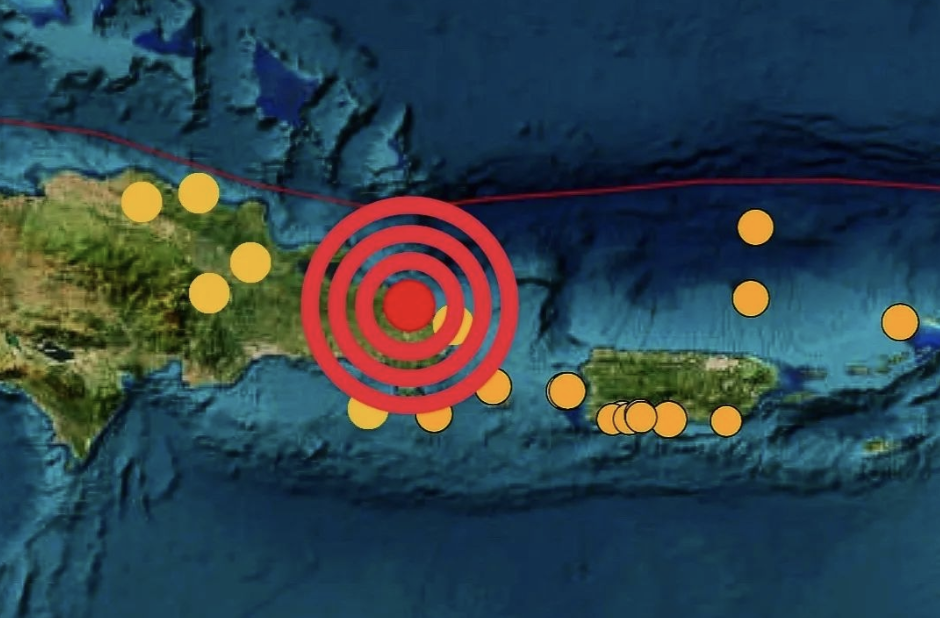
The recent major tragedy of the earthquake in Turkey has led to Dominican earthquake experts coming forward for actions to reinforce vulnerable buildings in the Dominican Republic.
The director of the National Seismology Center of the Autonomous University of Santo Domingo (UASD), Ramon Delanoy urges the authorities to reinforce public school and public hospital structures, especially those in vulnerable areas of the country, as reported in El Dia.
In an interview with El Dia, he mentioned several measures people can take to minimize damages in their own homes. He said people should check to see if additional columns or beams may be needed to minimize damages.
Furthermore, Delanoy recognized the need for the authorities, particularly the country’s municipalities, to create “tolerance” areas or spaces such as parks, people can use as shelters to spend the night in possible tents without going far from their homes.
In these environments, the relief and health care agencies would offer the necessary assistance to the population, and where people can reunite with their relatives. The areas should be fitted with bathrooms and other facilities.
As for the safest places to take refuge inside the houses once the vibrations of an earthquake are felt, Delanoy suggests that people take shelter in the bathrooms and corridors of the bathrooms.
“In houses, people should look for the safest place, which is usually the bathroom because it is a narrow structure, has walls and a small ceiling, which makes it less likely to collapse,” he said.
He said people should be aware of the columns in their dwelling, areas where there is greater resistance.
The director of Seismology said to stay away from ceiling fans and places where there are objects that can fall, such as kitchen cabinets.
Delanoy said elevators should not be used.
He suggests to stay away from glass walls, doors and windows, because the vibrations can crack the glass and cause injuries.
Delanoy refers that the country is affected by two plates, the North American plate to the north and the Caribbean plate to the south, which is pushed to the northwest and is also pushed by the Pacific plate. It also has incidence with the South American plate, which influences the tectonic dynamics of the Caribbean.
“The tremors will always occur along the plates of greater magnitude,” explained the physicist. Low magnitude tremors are registered daily here, but since they are distant, people do not notice them or confuse them; they release energy.
“In the country, in general, most of the constructions are not prepared to withstand an earthquake of magnitude 7.0, without causing serious damage,” he says.
There is a seismologic code, but Delanoy says there is no supervision to ensure the code is complied with. However, he says that the country’s high rises and plazas should withstand a 7.0 earthquake.
Delanoy explains that the damages that an earthquake can cause depend on the soil, the type of construction and how the soil behaves at the moment of the tremor.
“An example of this was the tremor we had on 1 February of 5.3. The damages were greater in Azua, which was a little farther away from Baní (where the epicenter was), he explained. He said this is because the soil in Azua is basically sandy, causing everything to move for a long time.
He said a 7.0 magnitude earthquake would cause damages mainly in the central part of the northern region, would be considerable because the entire Cibao Valley is sedimentary and the soils can behave as if they were water.
He said the seismic waves, as occurred in Azua, remain for a longer period of time, transmitting this energy to the structures and therefore, causing greater deterioration.
Delanoy says that earthquakes of magnitudes 5.0 downwards should not cause any damage to buildings, but unfortunately, as these are not made to withstand an earthquake, cracks occur.
He said people living in homes built on hillsides could be affected by landslides. He said it is people that cause the disaster and not nature, alluding to the decisions to build in areas of vulnerability.
On the other hand, Delanoy said a major tremor cannot be predicted, but frequent low intensity earthquakes do relieve the tension. He says there constantly are small earthquakes affecting the country.
There are 14 main faults in the country, the most active being the Septentrional, which is in the northern part; the Cibao fault, as well as the San José de Ocoa fault, the San Juan fault, the Neiba fault and the Enriquillo-Plantain Garden fault.
The latter is a continuation of what is known as La Trinchera de los Muertos, which is a zone that goes from Puerto Rico, crosses the south of the Dominican Republic and goes through the Neiba Bay.
Delanoy explained the UASD center operates with the
cooperation of the seismic network of Puerto Rico and of the seismological service of the United States Information Center.
Chronology of 6+ earthquakes in the DR:
4 August 1946: Earthquake of magnitude 8.1, in Samaná and on the 8th of that month there was an aftershock of 7.6
21 April 21 1948: Earthquake of magnitude 7.0 in the northeastern part of the country
31 May 1953: Earthquake of 6.7 in Puerto Plata
24 June 24 1984: A 6.9 magnitude earthquake south of San Pedro de Macorís
22 September 2003: An earthquake of magnitude 6.4 was registered in the early morning of that day in Puerto Plata.
Read more:
El Dia
El Dia
Noticias SIN
DR1 Earthquake Recommendations
USGS
Intec
14 February 2023

